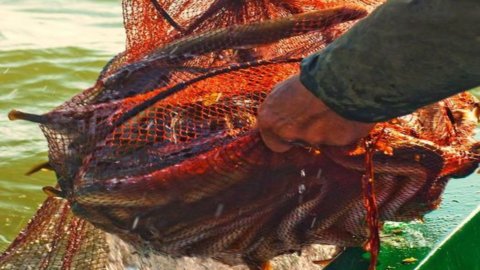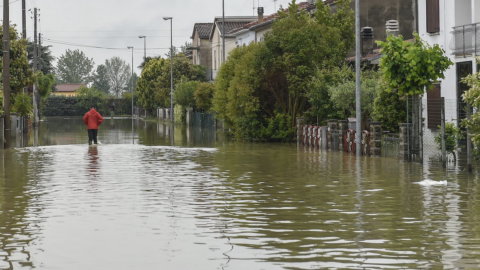The fish in the Orbetello Lagoon are suffocating due to the algae that develop due to the summer heat when the water temperature exceeds 28 degrees and above all with the hot temperatures of these days. Since April, fishermen have collected 600 tons, a small part of the estimated 50 there are.
In the Orbetello Lagoon fishing has a long history and is afundamental activity for the economy of the area; sea bass, sea bream, mullet, eels, calcinelli, prawns, females are the most common species and fishermen have always used traditional methods of catching, as the worker, the hammer and the trammel. Modernized over time, these techniques maintain their sustainability characteristics: the fish, in fact, arrives spontaneously, according to the season and the tides, without the use of bait feed.
The worker, a barrier once made of wood and now mechanized, is positioned in correspondence with the channels that allow the exchange of water between the lagoon and the open sea. The working fish takes advantage of the high tide: the entry of water from the sea into the lagoon attracts schools of fish towards the dam and channels them into a series of "deception" chambers which lead them to the "catch box", where the fish still alive and in the water is selected by size and, depending on the case, hoisted with nets or released. In some seasons, in addition to the high tide, it is the reproductive instinct that pushes the fish towards the exit from the lagoon. The more sexually mature specimens are allowed to pass so that they reach the sea of the coast to reproduce: from here, the young specimens, thanks to the low tide, will be able to return to the lagoon. All the fish species of the lagoon are fished with the trawler as well as with the trammel net, a fixed gillnet made up of three layers of mesh, used mainly in the summer and in the months of November, December and January.
The hammers and pots, on the other hand, are more selective: positioned inside the lagoon, they only catch eels, females (winter crabs), prawns and blennies. In winter, the martavelli, with their typical funnel-shaped net with final chamber, are inserted into "deception structures" made with nets, reeds and poles. In summer they are placed in less complicated structures called "crocioni" and can also be moved on a daily basis.
But all this heritage is today undermined by an exceptional algal proliferation which threatens not only the eco-environment of the lagoon but also the work of the fishermen.
“Environment and fishing are closely related: if one is not protected, the other also suffers. The lagoon has been suffering for years and fishing has consequently had an exponential decline: in the summer we now fish little or nothing”, explains Pier Luigi Piro, president of the Cooperative I Pescatori di Orbetello, which has 44 members, 38 temporary employees and 15 permanent employees. The problem was discussed in a meeting at the headquarters of the fishermen of Orbetello between Confcooperative, Fedagripesca Toscana and the Tuscany Region.
On the table, first of all, the state of health of the lagoon: it is not the environmental disaster that occurred in 2015, but the algae situation has not been resolved and recurs every year. "AND' necessary to dig the gutters, and we need suitable vehicles for collection: now we have two obsolete ones, we would need at least 6 lighter and more dynamic ones” underlines Piro.
In addition to the specific situation of the lagoon, the Tuscan operators in the sector - about 600 boats and 2.000 employees including related industries - are asking for regional planning of activities at sea and maritime spaces, to identify areas for fishing and aquaculture, plans of shared management for professional fishing and for protected areas, distribution of Community resources not only on the basis of the size of the flotilla operating in the individual regions but also on the basis of the marine protection measures put in place.
The Orbetello lagoon yes covers about 27 square kilometers: an immense body of water once regulated solely by nature and today subject to anthropic pressure that makes its management increasingly complex.
Unfortunately, the fishermen's activity is increasingly difficult due to cyclical calamities (with disastrous effects on marine fauna) caused by inattentive and respectful management of this extremely delicate ecosystem.
Slow Food has also intervened by registering fishing in the lagoon among the Slow Food Presidia althe aim of trying to reverse direction with the aim of ensuring that the fishermen - involved for the first time in the management of the lagoon - commit themselves to improve the environmental situation of the lagoon, requesting and monitoring the interventions necessary for its recovery and for its maintenance in good health.
The Presidium protects a historic tradition (of fishing and processing), focusing exclusively on traditional techniques and wild fish: sea bass, mullet, eels, calcinelli, prawns, females.





